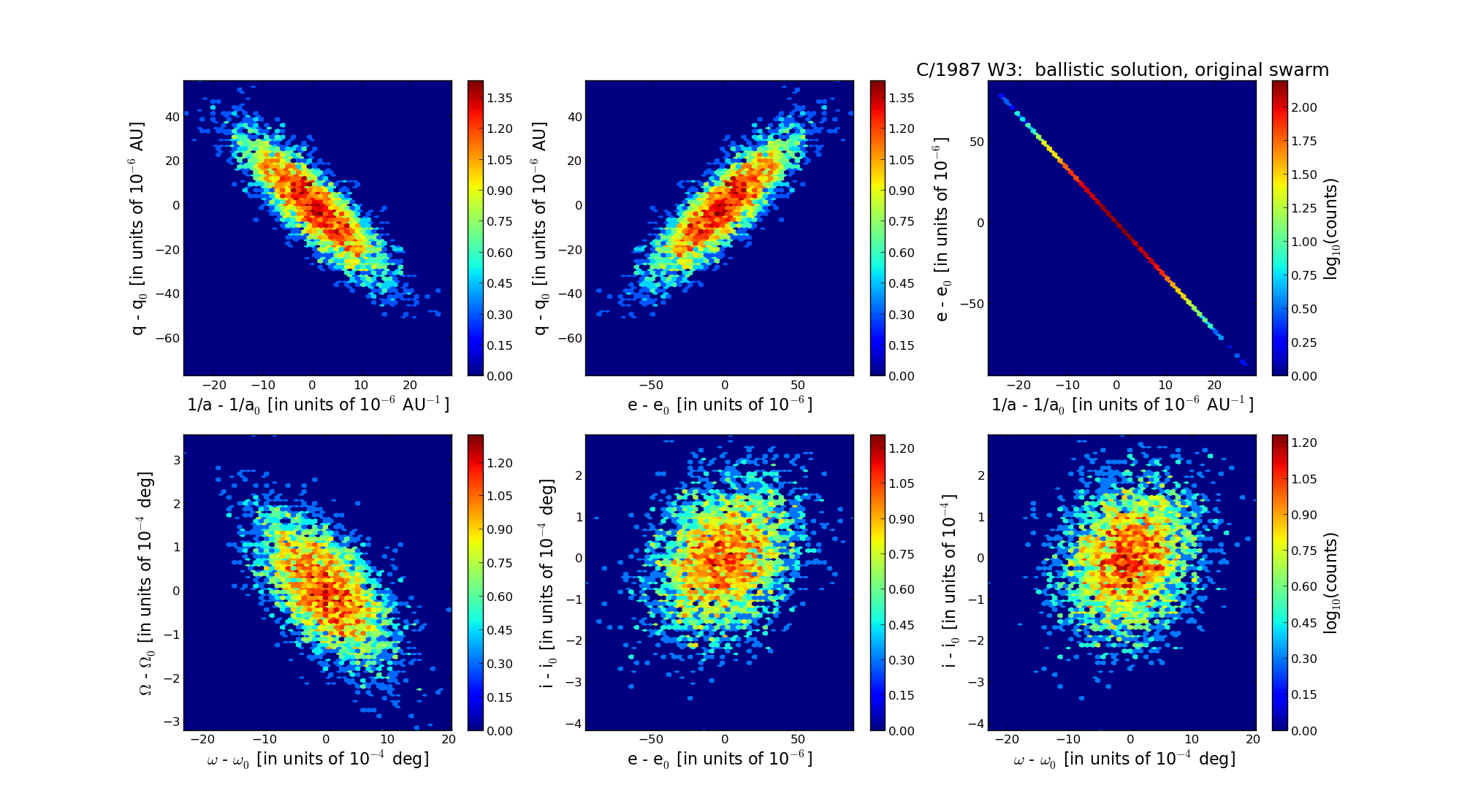| Solar System Dynamics & Planetology Group |
 |
C/1987 W3 Jensen-Shoemaker |  |
| Solar System Dynamics & Planetology Group |
 |
C/1987 W3 Jensen-Shoemaker |  |
| number of observations | 34 |
| number of residuals | 65 |
| data interval | 1987 Sep. 24 — 1990 Apr. 29 |
| rms [arcsec] | 1.22 |
| orbit quality class | 1a |
| Epoch (TT) | 19871231.0 | = JD 2447160.5 |
| time of perihelion passage (TT) | 19880118.808909 | ± 0.002680 |
| perihelion distance | 3.33281436 | ± 0.00001639 |
| eccentricity | 1.00477970 | ± 0.00002465 |
| argument of perihelion [deg] | 194.736359 | ± 0.000546 |
| longitude of the ascending node [deg] | 198.345564 | ± 0.000086 |
| inclination [deg] | 76.715895 | ± 0.000095 |
| inverse semimajor axis [10-6 au-1] | -1434.13 | ± 7.38 |

| Epoch (TT) | 16850706 | |
| time of perihelion passage (TT) | 19880119.288960 | ± 0.002646 |
| perihelion distance | 3.32264693 | ± 0.00001598 |
| eccentricity | 0.99991866 | ± 0.00002412 |
| argument of perihelion [deg] | 195.061575 | ± 0.000542 |
| longitude of the ascending node [deg] | 198.376791 | ± 0.000087 |
| inclination [deg] | 76.786374 | ± 0.000095 |
| inverse semimajor axis [10-6 au-1] | 24.48 | ± 7.26 |
| Epoch (TT) | 22860318 | |
| time of perihelion passage (TT) | 19880118.036179 | ± 0.002735 |
| perihelion distance | 3.32893198 | ± 0.00001617 |
| eccentricity | 1.00120357 | ± 0.00002420 |
| argument of perihelion [deg] | 194.587361 | ± 0.000546 |
| longitude of the ascending node [deg] | 198.345776 | ± 0.000087 |
| inclination [deg] | 76.707904 | ± 0.000095 |
| inverse semimajor axis [10-6 au-1] | -361.55 | ± 7.27 |